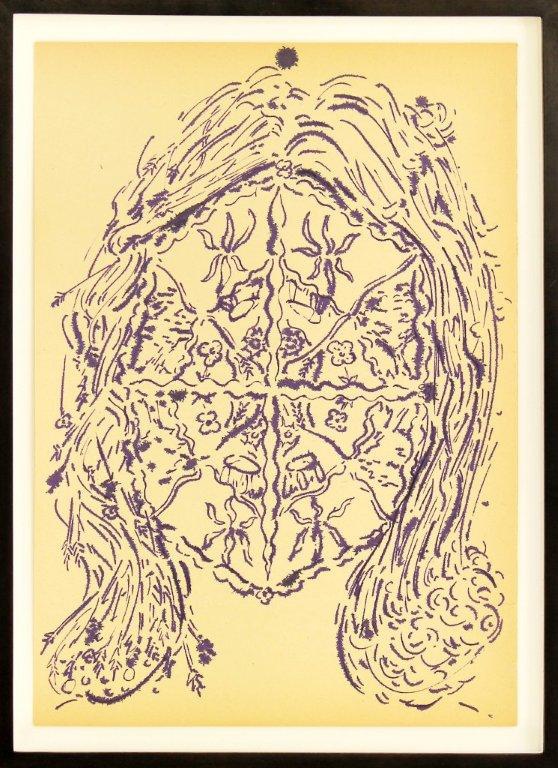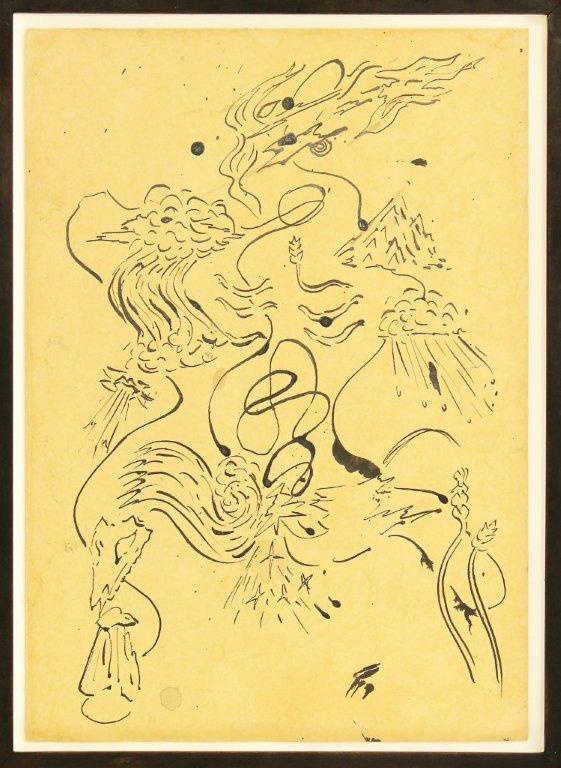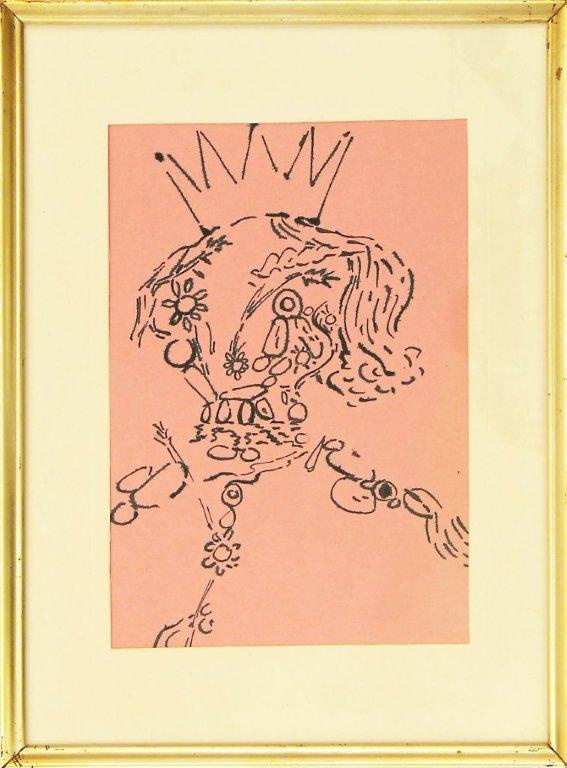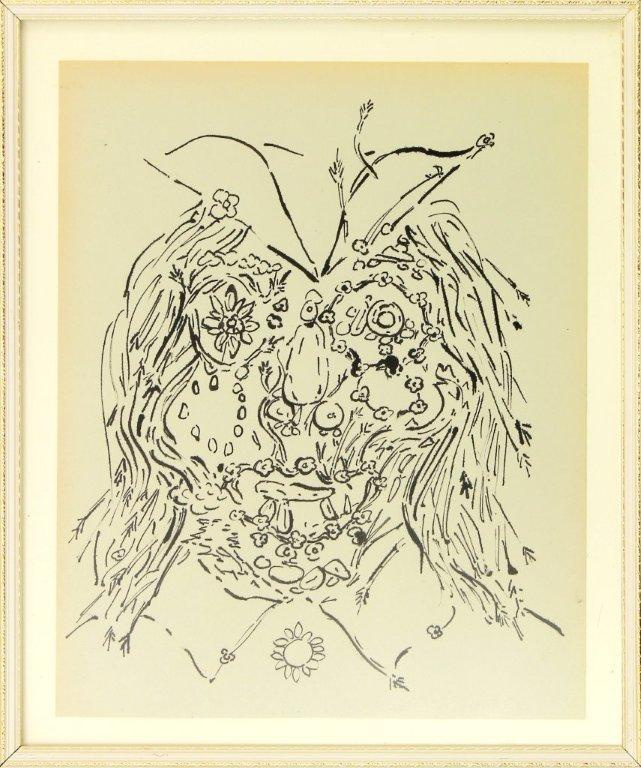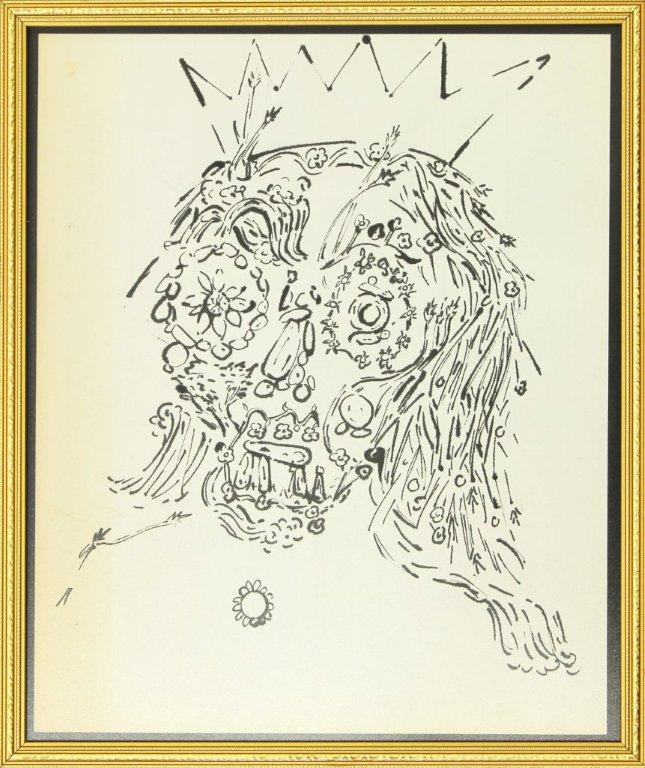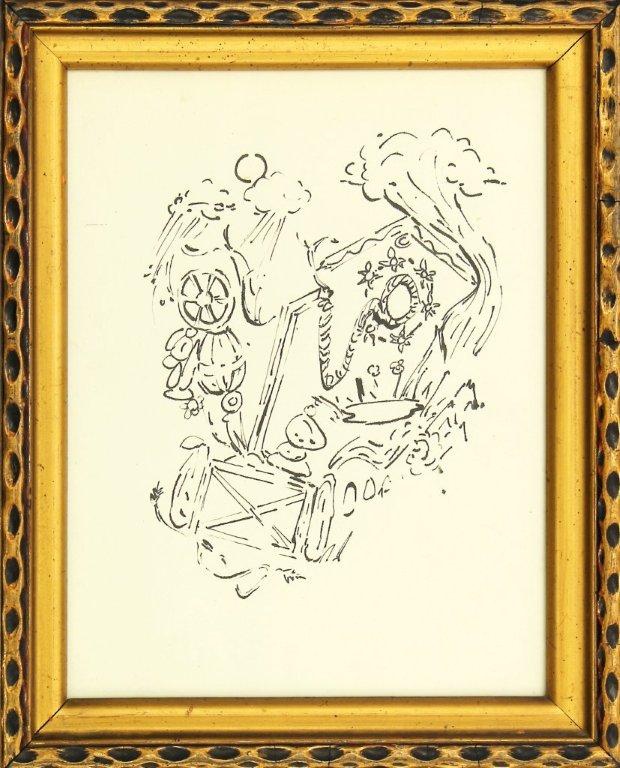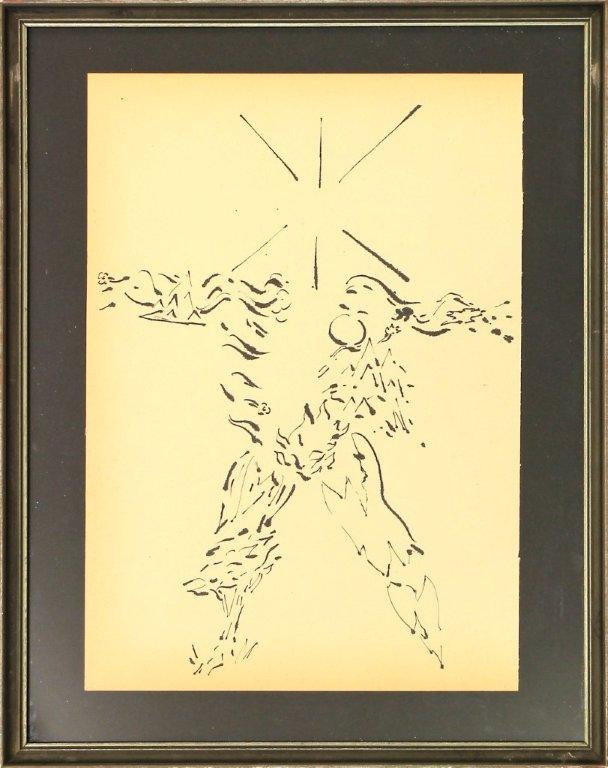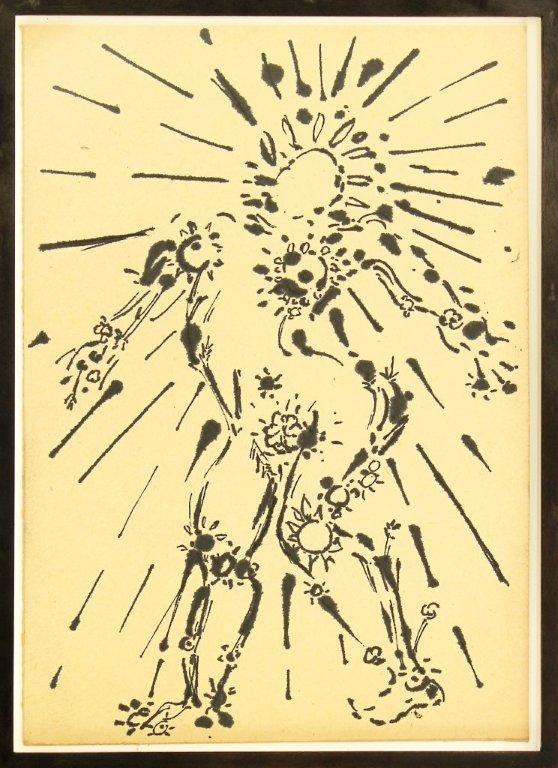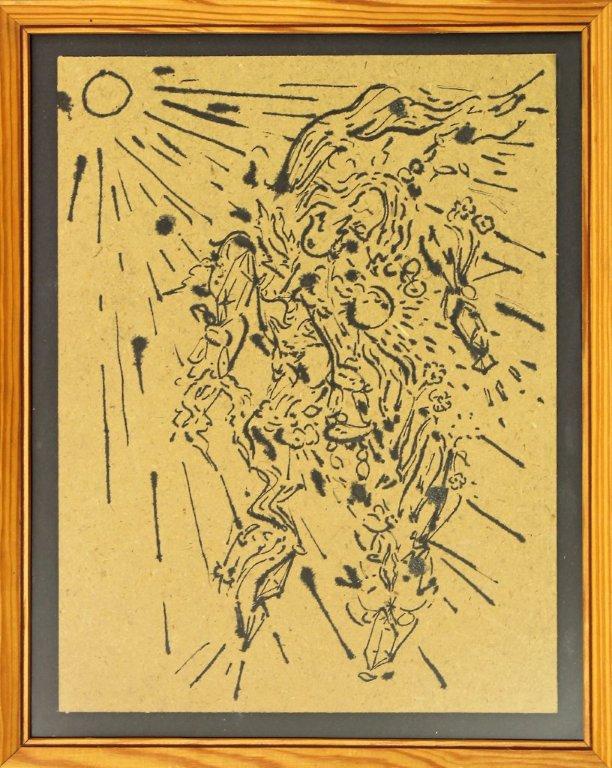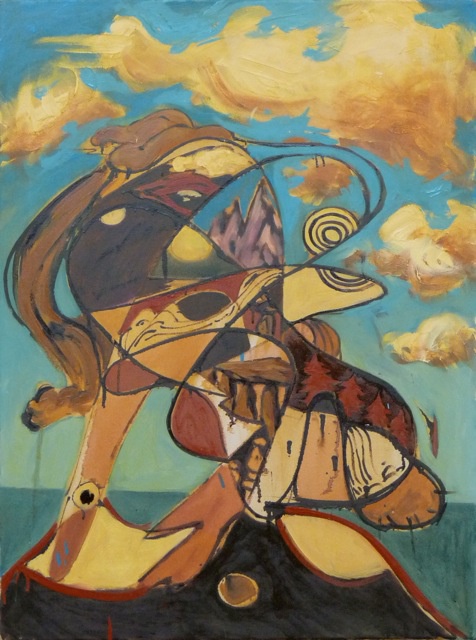Ben Cottrell makes explosive-looking drawings, paintings, collages and sculptures that seem pretty clear and simple at a first glance, but explode into a multitude of shapes and colours if you look more closely. In his – often very large – paintings, Cottrell combines various techniques. Ranging from blobs and strokes of paint that seem as if they have been applied randomly on the canvas, to more refined and elegant lines applied with precision and attention for detail. The monumental mood caused by the sheer size and darkness of his work is lifted by these elegant shapes on the surface.
Objects and bodies have merged into abstract landscapes that are sometimes fragmented. Cottrell’s mask-like main characters remind us of ghosts or aliens because of their empty and white eye sockets. They are elusive: they dissolve into the surrounding landscapes as if by magic when you look more closely. This link between humans and nature is a recurring theme. They enter into a dialogue with each other, as it were. The same goes for control versus coincidence, intellect versus instincts, heaven versus hell. In the end, horror, paranoia and psychosis are always just around the corner. This is how Ben Cottrell makes spectators think about their own irrational, off-putting and utterly irrepressible instincts, both in society as well as in nature.
Finally, many art-historical stylistic influences can be found in Ben Cottrell’s work ranging from Willem de Kooning’s abstract expressionism to Picasso’s primitivism, from Francis Bacon’s tormented characters to Caspar David Friedrich’s romantic force of nature. The somewhat worn wooden frames that often embellish the artworks add a touch of decay and nonchalance – as if they were found on the streets somewhere.


